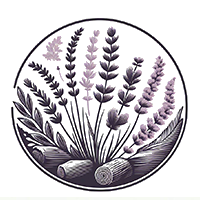Coumarin is a fragrant compound with a sweet, hay-like aroma that has been a staple in perfumery for many years. It was first isolated in 1820 from tonka beans and since then has been identified in many plants, including sweet clover, sweet grass, and certain types of cinnamon. Historically, coumarin was used for its pleasant scent in tobacco products and as a flavoring agent. In perfumery, coumarin is prized for its warm, sweet smell which is reminiscent of freshly cut hay or sweet grass, with hints of vanilla and almond. This makes it a popular choice for adding depth and warmth to fragrance compositions. It's especially common in "fougère" and "oriental" fragrance families. Coumarin's versatility allows it to blend well with various notes, enhancing floral, woody, and spicy accords in perfumes. The use of coumarin in perfumery today is often synthetic due to restrictions on natural coumarin in some regions, stemming from health concerns at high concentrations. Synthetic coumarin provides a consistent and safe way to achieve its characteristic aroma in fragrances. Its role in modern perfumery remains significant, as it adds a comforting and familiar scent that appeals to a wide audience.
Natural or Synthetic?
Coumarin is used in both forms due to its natural occurrence in many plants and the practical benefits of synthetic production. Natural coumarin is present in tonka beans, sweet clover, and other plants, but due to regulatory reasons and the consistency of scent quality, synthetic coumarin is commonly used in perfumery. Synthetically, it is produced through various chemical processes, ensuring a stable and safe supply for fragrance formulations.
Fragrance Families Coumarin Most Commonly Found In
Show fragrances that contain Coumarin as a note



